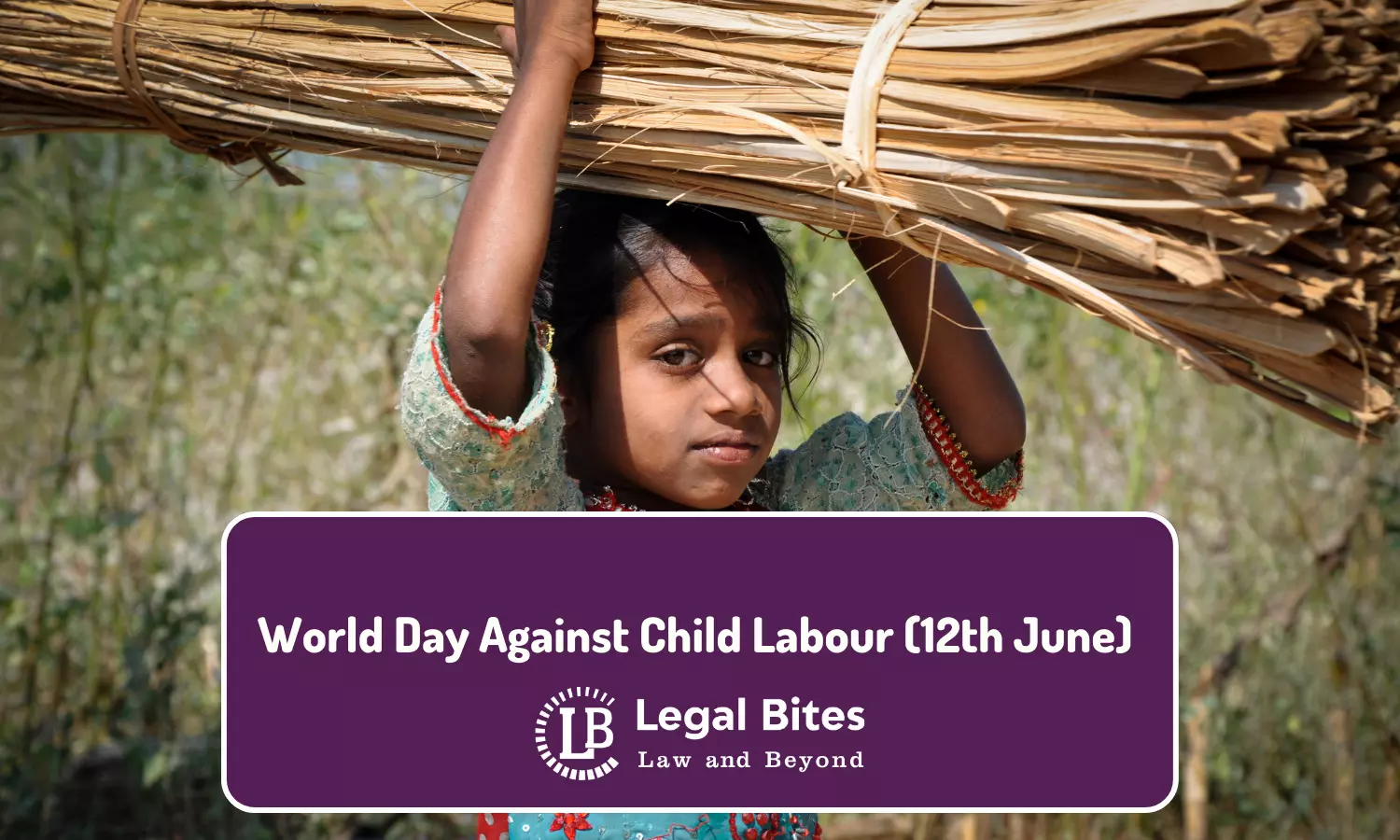World Day Against Child Labour 2023 | 12th June | #Must Know
The article 'World Day Against Child Labour' raises awareness about the detrimental impact of child labour on children's lives

The article 'World Day Against Child Labour' raises awareness about the detrimental impact of child labour on children's lives and emphasises that 12th June serves as a platform to promote action against child labour and mobilize efforts to eliminate this grave violation of children's rights.
World Day Against Child Labour (12th June) | #Must Know
The World Day Against Child Labour is observed every year on June 12th. It is an international day dedicated to raising awareness about the issue of child labour and advocating for the rights of children. The day was first established in 2002 by the International Labour Organization (ILO), a specialized agency of the United Nations that sets labour standards and promotes social justice.
Child labour refers to the employment of children in work that is mentally, physically, socially, or morally harmful to them. It deprives children of their childhood, interferes with their ability to attend regular schools, and is mentally, physically, socially, or morally harmful. Child labour is a global problem that affects millions of children worldwide, and it is most prevalent in developing countries.
The World Day Against Child Labour serves as a platform to raise awareness about the issue and promote actions to eliminate child labour. Governments, international organizations, civil society, and individuals come together on this day to discuss strategies, policies, and initiatives aimed at eradicating child labour. The day also highlights the importance of education and emphasizes the need to ensure that all children have access to quality education.
The theme for the World Day Against Child Labour varies each year and focuses on different aspects of the issue. Through various campaigns, events, and activities, the day seeks to mobilize support and encourage actions to end child labour. Governments, employers, workers' organizations, and individuals are urged to take steps to protect children from exploitation and create a world where every child has the opportunity to learn, grow, and thrive.
It is important to remember that child labour is a complex issue deeply rooted in poverty, lack of education, social inequality, and weak legal protections. Addressing child labour requires a comprehensive approach that involves not only stricter laws and enforcement but also poverty alleviation, access to quality education, social support systems, and empowering communities.
By observing the World Day Against Child Labour, we can collectively raise awareness, advocate for change, and work towards the goal of ending child labour globally.
Here are some common causes of Child Labour:
Poverty: Poverty is one of the primary drivers of child labour. When families struggle to meet their basic needs, children may be forced to work to contribute to the household income. Poverty deprives children of education and exposes them to exploitative labour.
Lack of Access to Education: Limited access to quality education is a significant factor that contributes to child labour. When children are denied the opportunity to attend school or lack adequate educational facilities, they may end up working to support their families instead.
Cultural and Traditional Practices: In some societies, cultural norms and traditional practices perpetuate child labour. For example, in certain agricultural communities, it is customary for children to assist their parents in farming or other forms of labour from a young age.
Demand for Cheap Labour: Industries that rely on cheap labour may exploit children as a source of an inexpensive workforce. Sectors such as agriculture, textiles, mining, and informal labour often involve hazardous conditions and long hours, making children an attractive labour force due to their vulnerability and low wage expectations.
Lack of Awareness and Social Protection: Insufficient awareness about the negative consequences of child labour and inadequate social protection systems contribute to its persistence. In societies where child labour is normalized or overlooked, efforts to combat the issue may be limited.
Conclusion
By promoting global solidarity and raising awareness about the urgent need to eliminate child labour, the World Day Against Child Labour catalyzes change and underscores the shared commitment to protect children's rights and secure a brighter future for all.

